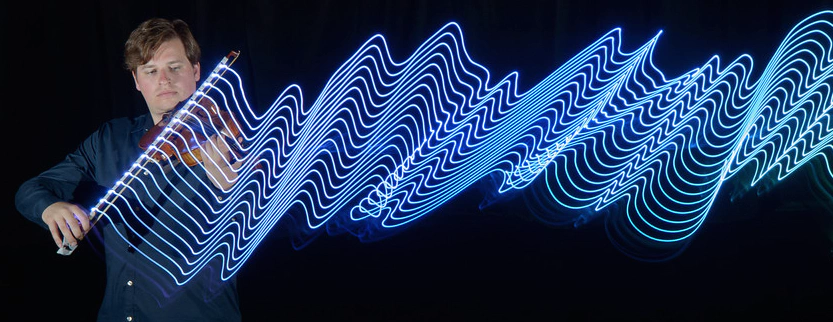Postdoc position "Accurate detection of precise spiking motifs in neurobiological data"
THE POSITION HAS BEEN FILLED!
 © Motion Exposure - Stephen Orlando. With permission by the artist.
© Motion Exposure - Stephen Orlando. With permission by the artist.Dear colleagues,
Applications are welcome for a fully funded 18-month postdoctoral position for the development of an algorithm for the accurate detection of precise spiking motifs in neurobiological data. The position will be located at the INT in Marseille, France. The project is funded by the polychronies grant (AMX-21-RID-025) and coordinated by Laurent Perrinet together with Thomas Schatz (theory) and Rosa Cossart (neurobiology).
Candidates should have experience in computational neuroscience, physics, engineering, or related fields, and a strong background in machine learning. The candidate must have good computer science skills (programming skills, git versioning, …) and Python programming experience is required. A multidisciplinary background would be highly appreciated, especially an advanced knowledge of mathematics. The candidate must have a strong interest in neuroscience. The candidate must be fluent in English and willing to proactively interact with partners in different communities, including theoretical neuroscience, machine learning, or neurobiology. The preferred candidate should have the ability to work independently and be flexible to adapt to the working methods of the supervisors.
Related references
More details on the “polychronies” grant:
(2022). Polychronies (2022 / 2025).Our recent review on Precise spiking motifs in neurobiological and neuromorphic data:
Application of detecting spiking motifs in neuromorphic data:
(2023). Learning heterogeneous delays in a layer of spiking neurons for fast motion detection. Biological Cybernetics.A theoretical framework on the accurate (supervised) detection of spiking motifs in (synthetic) multi-unit raster plots
job offer posted on: Euraxess - jobrXiv - academic positions
Research context
The position will be carried out in the team “NEuronal OPerations in visual TOpographic maps” (NeOpTo) within the Institut de Neurosciences de la Timone in Marseille, a welcoming and lively town by the Mediterranean Sea in the south of France. The research team is led by F. Chavane (DR, CNRS) and currently hosts 4 permanent staff, 3 post-docs and 4 PhD students. The research themes of the team are focused on neuronal operations within visual cortical maps. Indeed, along the cortical hierarchy, low-level features such as the position and orientation of the visual stimulus (but also auditory tone, somatosensory touch, etc…) but also higher-level features (such as faces, viewpoints of objects, etc…) are represented topographically on the cortical surface.